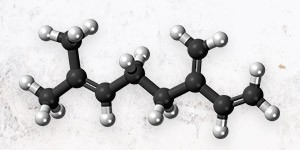By Andres Ozaita

Andrés Ozaita is an associate professor at the Pompeu Fabra University of Barcelona Department of Experimental and Health Sciences. His research focuses on the cellular and molecular processes involved in cognitive function, with special attention to the role of the endocannabinoid system and its modulating function of cognitive processes in health and in intellectual disability situations.
His research has led to some fifty publications in specialised international journals, as well as an international patent licensed on the therapeutic applications of the endocannabinoid system in intellectual disability.
Cannabis alters different cognitive functions such as memory, perception, attention, understanding, language, orientation and executive function. These alterations have been described in consumption situations, either for recreational or medicinal reasons, as well as experimental situations, or in studies in humans or in experimental animals. These alterations can be acute, derived from intoxication, or sustained over time due to prolonged consumption.
When assessing the effects of cannabis, it should be considered that the Cannabis sativa plant's preparations contain around one hundred types of phytocannabinoids, each of them in different proportions. Among them, delta9-tetrahydrocannabinol (also known as THC) is the main phytocannabinoid with psychoactive effects, and the focus of attention when studying the cognitive alterations related to the consumption of plant derivatives. Genetic, pharmacological and flexibility studies of nerve transmission or synaptic plasticity in brain tissue from animal models have shown that the cognitive alterations produced by THC are mediated by the main cannabinoid receptor in the organism, the cannabinoid receptor type 1 (CB1), a protein whose expression is high in regions of the brain crucial memory and learning processes such as the hippocampus or the cerebral cortex. The cannabinoid receptor CB1 is part of the endogenous cannabinoid system, or endocannabinoid system, whose distribution by the organism is especially relevant in the central nervous system.
In humans, the negative effects of cannabis on memory processes have been described in multiple studies. Even so, it should be taken into account that in controlled studies with human consumers, it is very difficult to weigh the degree of involvement of cannabinoids on cognitive function since several factors such as the diversity of the subjects' cognitive abilities, the variety of consumption, the variety and origin of the substances consumed, as well as the proportion of these substances of the main active components, or their consumption combined with other substances such as tobacco or alcohol must be taken into account. In all these categories, there is a wide range of cases that makes it difficult to obtain clear conclusions.
Another factor that can influence the effects of cannabis on cognitive function is the age of onset of consumption. It is important to bear in mind that up until the age of 21-25 years, the human brain is subject to maturing processes of various brain connections. These maturing processes are highly susceptible to environmental stimuli, and the endocannabinoid system, where the phytocannabinoids act, is involved in correct brain development. Therefore, consuming cannabis at ages in which the brain is still maturing may have a negative impact on its development and, consequently, on cognitive functions. Cannabis use during school age correlates with several indicators, including the increased risk of addiction or cannabis dependence, increased risk of mental illness, worse school performance and deficits at the cognitive development level. This data is very relevant because according to the report from the Spanish Drug and Drug Addiction Observatory, cannabis is the illegal drug most consumed by young people between 14 and 18 years, and the average age of onset of consumption is before 15 years.
With regard to experimental observations, where the cognitive capacities and levels of studies of the groups of subjects can be counterbalanced, and where well-defined doses are administered in a standardised manner and with exhaustive temporal control, the conclusions of the Cognitive alterations by cannabis derivatives leave no room for doubt. Acute administration of the psychoactive compound of cannabis, THC, produces adverse effects on learning and memory. There are different studies that show how chronic cannabis use affects cognitive processes, mainly verbal learning and memory studied through word list learning tasks. These deficits have been observed in the adolescent and adult populations and a correlation has been found between the degree of performance in the tests and the frequency, quantity, duration and year of initiation of cannabis use. In this sense, worse results were found in subjects who had spent more years consuming or in those who consumed the preparations with higher amounts of THC. Another type of memory that can be affected by cannabis use is working memory, a type of transient memory that enables temporary manipulation of information for performing complex cognitive tasks. Given that working memory is a broad term that encompasses a diverse number of tasks (verbal, numerical, spatial, among others), there are studies with evidence in different directions. Even so, it seems that this type of memory would be more affected in adolescent consumers than in adult consumers.
It has also been experimentally evaluated whether the effects of cannabis on cognitive tasks are cumulative or, on the contrary, whether prolonged exposure produces some degree of tolerance in cognitive deficits, as in the case of other pharmacological effects of cannabis such as analgesia or hypothermia. In this context of repeated exposure, the use of functional magnetic resonance imaging techniques enables the observation that although a cannabis could regular consumer could exhibit certain cognitive abilities preserved in comparison with healthy controls, the response generated to a specific cognitive task requires mobilisation of a larger number of brain resources than non-cannabis-consuming controls. Therefore, in cognitive tests in which the performance between consumers and non-cannabis users does not present significant differences, cannabis users need greater and broader brain activation compared with non-consumers when carrying out a simple task a few hours after consuming the drug.
These data point to the relevance of the endocannabinoid system as a neurobiological substrate that is prominently involved in learning and memory. Studies in animal models reveal a curious role for cannabinoid receptors. When these receptors, mainly those most expressed in the central nervous system (CB1 receptors), are eliminated from the body, animals without CB1 receptors have trouble forgetting. This curious observation goes in the line that our brain is designed to store information that may be relevant to the organism, while not consolidating memories that may be unnecessary over time. In this sense, the increase of the endocannabinoids themselves, lipids from our own organism that interact with cannabinoid receptors to activate them, can also modulate memory processes. Thus, compounds that inhibit the enzymes that degrade the endocannabinoids cause them to accumulate. In animal models, it has been observed that this accumulation at the cerebral level interferes in memory consolidation, producing an effect similar to that observed by the action of THC.
More recently, and using mice as an animal model, a series of paradoxical phenomena has been described in relation to the cognitive effects of cannabinoid compounds that has opened a new research niche and possible medical applications. On the one hand it has been observed that in mice models for Alzheimer's disease, compounds with properties similar to THC reduce brain inflammation and produce cognitive improvements. On the other hand, it has been observed that in healthy long-living animals, repeated administration of THC at intermediate doses produces cognitive improvements mediated by CB1 cannabinoid receptors. That same administration of THC, on the other hand, was very negative at the cognitive level in young adult animals, which showed that the age of the individuals is a very relevant parameter when it comes to understanding the effect of cannabis on the brain.
From the latter evidence, in contrast to the other the studies presented, it follows that there is much to understand about how to take advantage of the endocannabinoid system as a therapeutic target, and the cognitive benefits and losses of the use of cannabis derivatives in pathological situations and in the different stages of life. These benefits and risks must be weighed in cases in which the use of cannabis derivatives is tried as therapy. The fact that several countries have begun to consider, or have taken steps toward legalising cannabis derivatives, generates a momentum in which experimental advances should guide the use of this natural resource.
References of interest:
Aso E, Ferrer I. Cannabinoids for treatment of Alzheimer's disease: moving toward the clinic. Front Pharmacol. 2014 Mar 5;5:37.
Blakemore SJ. Teenage kicks: cannabis and the adolescent brain. Lancet. 2013 Mar 16;381(9870):888-9.
Broyd SJ, van Hell HH, Beale C, Yücel M, Solowij N. Acute and Chronic Effects of Cannabinoids on Human Cognition-A Systematic Review. Biol Psychiatry. 2016 Apr 1;79(7):557-67.
Busquets-Garcia A, Puighermanal E, Pastor A, de la Torre R, Maldonado R, Ozaita A. Differential role of anandamide and 2-arachidonoylglycerol in memory and anxiety-like responses. Biol Psychiatry. 2011 Sep 1;70(5):479-86.
Elsohly MA, Slade D. Chemical constituents of marijuana: the complex mixture of natural cannabinoids. Life Sci. 2005 Dec 22;78(5):539-48.
Grant CN, Bélanger RE. Cannabis and Canada's children and youth. Paediatr Child Health. 2017 May;22(2):98-102.
Kanayama G, Rogowska J, Pope HG, Gruber SA, Yurgelun-Todd DA. Spatial working memory in heavy cannabis users: a functional magnetic resonance imaging study. Psychopharmacology (Berl). 2004 Nov;176(3-4):239-47.
Kendall DA, Yudowski GA. Cannabinoid Receptors in the Central Nervous System: Their Signaling and Roles in Disease. Front Cell Neurosci. 2017 Jan 4;10:294.
Levine A, Clemenza K, Rynn M, Lieberman J. Evidence for the Risks and Consequences of Adolescent Cannabis Exposure. J Am Acad Child Adolesc Psychiatry. 2017 Mar;56(3):214-225.
Mechoulam R, Parker LA. The endocannabinoid system and the brain. Annu Rev Psychol. 2013;64:21-47.
Observatorio español de drogas y toxicomanía. Informe 2016: Alcohol, tabaco y drogas ilegales en España. Delegación del Gobierno para el Plan Nacional sobre Drogas.
Solimini R, Rotolo MC, Pichini S, Pacifici R. Neurological Disorders in Medical Use of Cannabis: An Update. CNS Neurol Disord Drug Targets. 2017;16(5):527-533.
Zanettini C, Panlilio LV, Alicki M, Goldberg SR, Haller J, Yasar S. Effects of endocannabinoid system modulation on cognitive and emotional behavior. Front Behav Neurosci. 2011 Sep 13;5:57.


